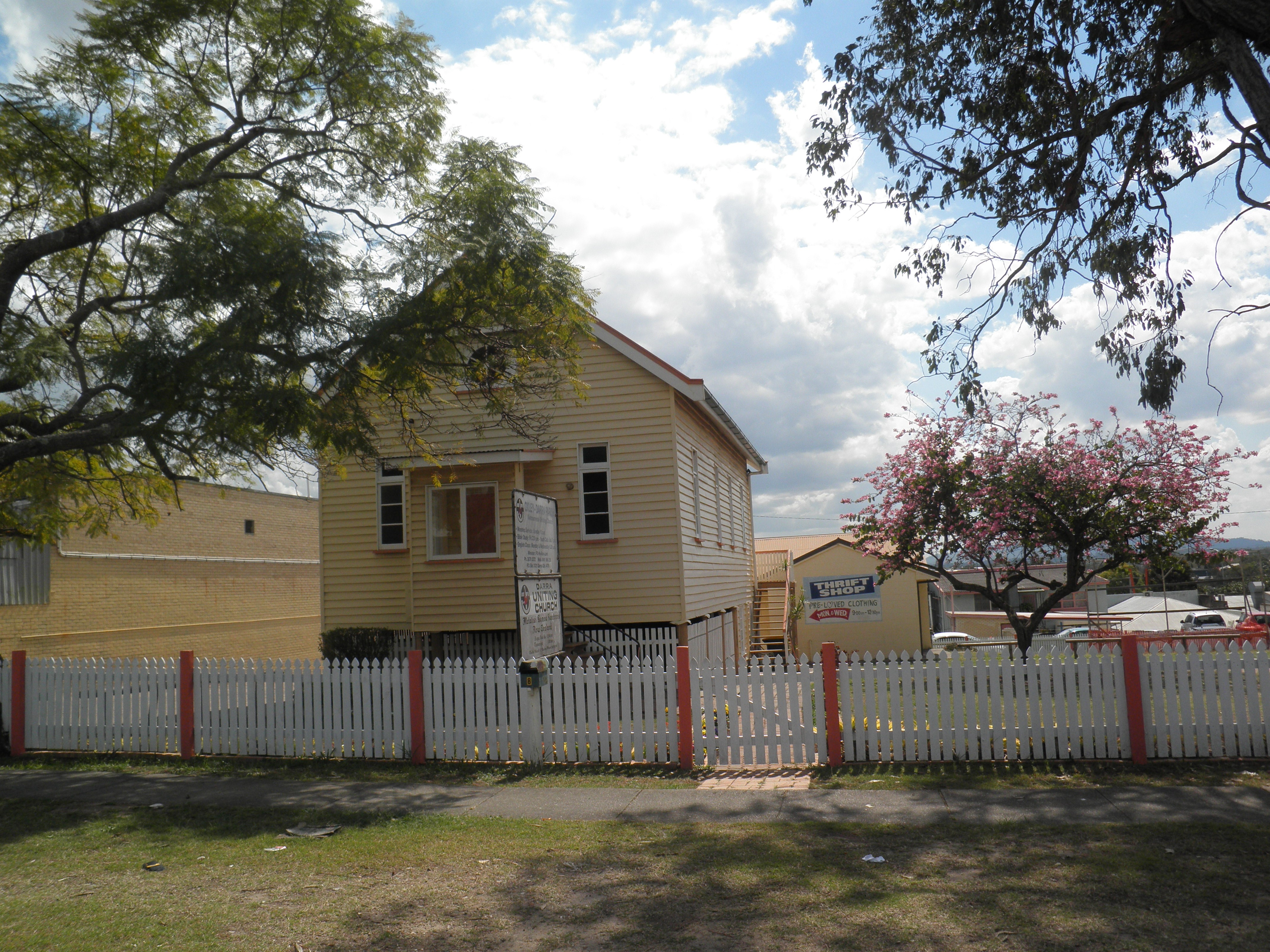Addresses
Type of place
Church
Period
Interwar 1919-1939
Style
Carpenter Gothic
Addresses
Type of place
Church
Period
Interwar 1919-1939
Style
Carpenter Gothic
The Darra Methodist Church was built in 1924 by the Darra Methodist community in response to their spiritual needs. The modest timber church was built at a time of increased settlement in the Darra area and became the preaching centre for the Methodist congregation of the Darra district in this period. The funds for the construction of the church were raised by the Methodist community. As the first Methodist Church in Darra it holds historic significance to Darra.
Lot plan
L14_RP29728; L13_RP29728
Key dates
Local Heritage Place Since —
Date of Citation —
Construction
Roof: Corrugated iron;Walls: Timber
People/associations
Darra Methodist community (Association)Criterion for listing
(A) Historical; (G) SocialInteractive mapping
Lot plan
L14_RP29728; L13_RP29728
Key dates
Local Heritage Place Since —
Date of Citation —
Construction
Roof: Corrugated iron;Walls: Timber
People/associations
Darra Methodist community (Association)Criterion for listing
(A) Historical; (G) SocialInteractive mapping
History
Darra’s development was influenced by the railway. By 1914 a post office had been established at Darra and a primary school had been opened in 1915 as a result of the increased population. Several large industries moved into Darra in the late nineteenth and early twentieth centuries and it was with this that the suburb moved away from a rural outpost and began to emerge as an industrious sector of Brisbane. The two main industries were Brittain’s Brickworks and the Queensland Cement and Lime Company. These large enterprises encouraged employment opportunities for many Brisbane residents and many of the workers built homes in Darra close to their place of employment. By 1921 the population of the Darra area had reached 423.
Prior to the construction of the Darra Methodist Church in 1924 a smaller church had been constructed in 1915. However, as the congregation grew in the interwar period the small church could no longer accommodate the numbers. Fund raising for the construction of a larger church began in the early 1920s. On Saturday 17 May, 1924 the stump-capping ceremony for the new church took place. Attended by a large number of the congregation and several dignitaries from the Methodist Church the stump-capping ceremony “served the dual purpose of [presenting] the laying of the foundation stone of a new house of God, and also of enabling both friends, neighbours, and members of the congregation to contribute towards the cost of the new structure.” (The Brisbane Courier, Monday 11 August 1924, p7) The estimated cost of the new building was £430.
By August that same year the church had been constructed. On the 9 August 1924 the official opening ceremony was held. Attended by the Darra Methodist congregation and several Methodist Church dignitaries, the dedication ceremony was led by Reverend W. R. Prouse, Superintendant Minister of the Bundamba circle. The cost of the construction of the church exceeded the initial estimate and totalled £600. In an article in The Brisbane Courier on the 11 August 1924, the opening ceremony was reported. The article stated: “The present church…is a neat and substantial example of modern architecture, 40ft by 22ft. Cathedral glass windows give an added touch of beauty to the church, which is fitted with an up-to-date electric light system, the gift of Mr. R. G. Oates, in memory of his son, the late Robert Eric Oates.” (The Brisbane Courier, Monday 11 August 1924, p7) The Darra Methodist Church served a wide area including Oxley and Seventeen Mile Rocks until the construction of the Oxley Methodist Church in 1930 that then became the preaching centre for the district.
The Darra Methodist Church is an intact example of a modest interwar timber church that was constructed by the Darra Methodist community. The church has played an important role in the lives of many Darra residents. As the only intact timber interwar church in Darra it is uncommon.
Statement of significance
Relevant assessment criteria
This is a place of local heritage significance and meets one or more of the local heritage criteria under the Heritage planning scheme policy of the Brisbane City Plan 2014. It is significant because:
Supporting images

Unknown photographer,
'Official opening of Darra Methodist Church on 9 August, 1924',
John Oxley Library, State Library of Queensland.
References
-
Watson, Donald and Judith McKay, Queensland Architects of the Nineteenth Century: A Biographical Dictionary, Queensland Museum, Brisbane, 1994
-
Judy Gale Rechner, Brisbane House Styles 1880 to 1940: a guide to the affordable house, Brisbane: Brisbane History Group Studies No. 2, 1998
-
Historic Titles, Department of Environment and Resource Management
-
Queensland Post Office Directories
-
Metropolitan Water and Sewerage Survey Maps
-
Brisbane City Council, Register of New Buildings 1930
-
Rev R S C Dingle ed Annals of Achievement: A Review of Queensland Methodism 1847- 1947, Queensland Book Depot, Brisbane, 1947
-
Jenkins, Lesley, A Celebration of Culture: A Social History of Darra, Living in Brisbane, 2003
-
Fones, Ralph, Oxley! A Mind of its Own, Oxley-Chelmer History Group, 2006
-
The Brisbane Courier, Monday 15 March 1915, p8
-
The Brisbane Courier, Monday 11 August 1924, p7
-
The Brisbane Courier, Monday 19 May 1924, p15
Citation prepared by — Brisbane City Council (page revised June 2022)

